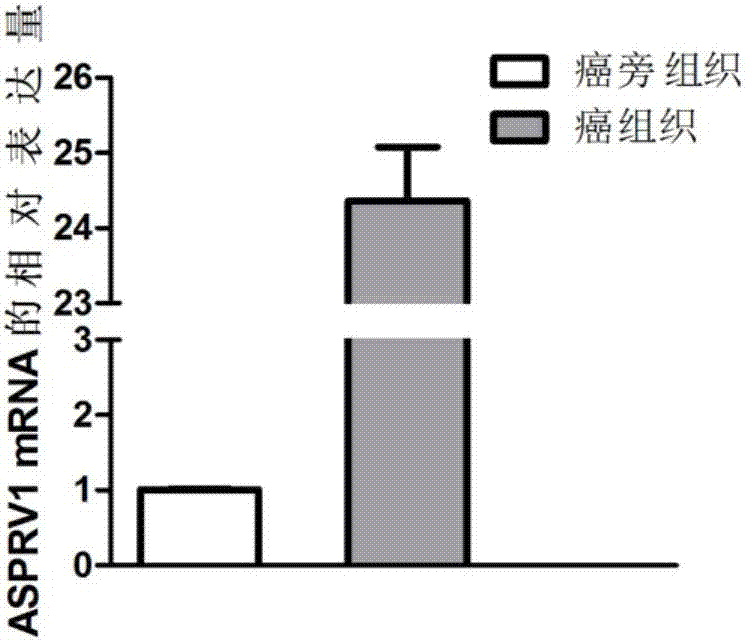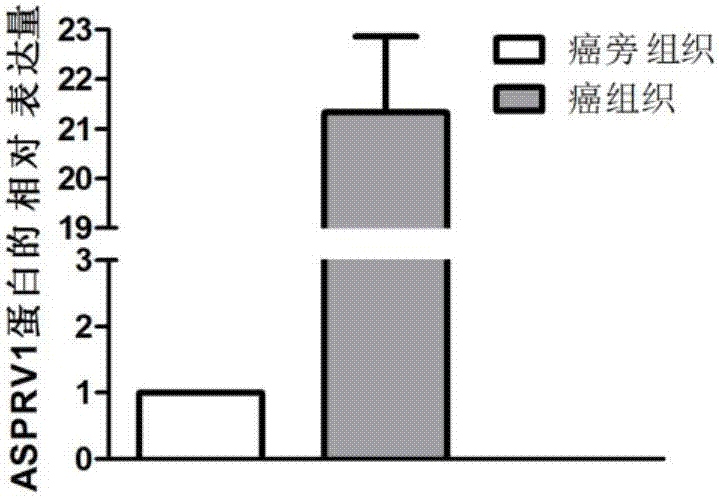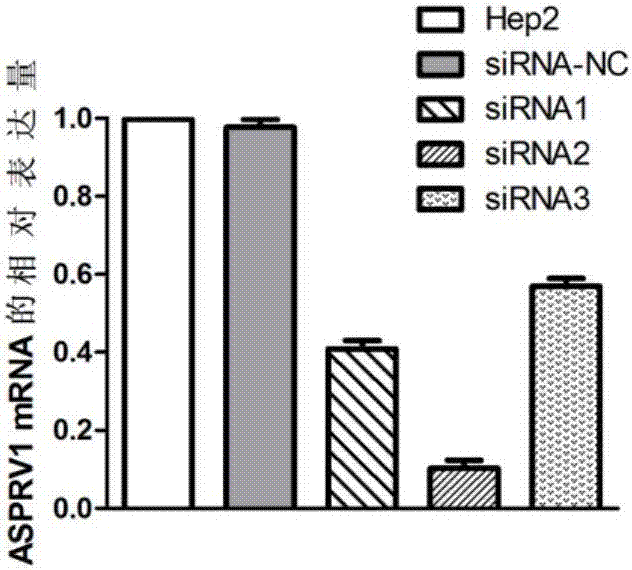Application of ASPRV1 used as biomarker in diagnosis and treatment of LSCC (laryngeal squamous cell cancer)
A technology for laryngeal squamous cell carcinoma and drugs, which is applied in the determination/testing of microorganisms, biomaterial analysis, biochemical equipment and methods, etc., can solve problems such as unclear etiology, and achieve the effect of improving accuracy
- Summary
- Abstract
- Description
- Claims
- Application Information
AI Technical Summary
Problems solved by technology
Method used
Image
Examples
Embodiment 1
[0074] Example 1 Screening for gene markers associated with laryngeal squamous cell carcinoma
[0075] 1. Sample collection
[0076] Six cases of laryngeal squamous cell carcinoma tissues and corresponding normal mucosal tissue samples were collected, and the informed consent of the patients was obtained for the tissue samples, and the approval of the organizational ethics committee was obtained.
[0077] 2. Preparation of RNA samples
[0078] 1) Add liquid nitrogen to grind the tissue to powder, add 1ml TRIzol (Invitrogen) solution, mix by pipetting to fully lyse the tissue, and let stand for 5 minutes;
[0079] 2) Centrifuge at 12000rpm at 4°C for 5min, and transfer the supernatant to a 1.5ml RNase free EP tube;
[0080] 3) Add 200 μl of chloroform, vigorously shake and mix for 30 s, make the aqueous phase and organic phase fully contact, and let stand at room temperature for 15 min;
[0081] 4) Centrifuge at 12000g for 15min at 4°C, centrifuge the solution into three lay...
Embodiment 2
[0097] Example 2 QPCR sequencing to verify the differential expression of ASPRV1 gene
[0098] 1. Large-sample QPCR verification of ASPRV1 gene differential expression. According to the sample collection method in Example 1, 50 cases of normal paracancerous mucosa tissues and 50 cases of laryngeal squamous cell carcinoma tissues were selected from patients with laryngeal squamous cell carcinoma.
[0099] 2. The specific steps of RNA extraction are as described in Example 1.
[0100] 3. Reverse transcription
[0101] 3. Reverse transcription: FastQuant cDNA First Strand Synthesis Kit (Product No.: KR106) was used for mRNA reverse transcription. Specific steps are as follows:
[0102] (1) Add 5×gDNA Buffer 2.0μl, total RNA 1μg, add RNase Free ddH 2 O to bring the total volume to 10 μl, heat in a water bath at 42°C for 3 minutes;
[0103] (2) Construct a 20μl reaction system, 10× Fast RT Buffer 2.0μL, RT Enzyme Mix 1.0μl, FQ-RT Primer Mix 2.0μl, RNase Free ddH 2 O 5.0 μl wa...
Embodiment 3
[0120] Example 3 Differential expression of ASPRV1 protein detected by protein immunoblotting
[0121] 1. Extraction of total tissue protein
[0122] Cut the tissue with scissors and put it into a glass homogenizer placed in ice. Mix the RIPA lysate and PMSF at a ratio of 100:1, and add the corresponding amount of RIPA lysate, crush the tissue with a glass homogenizer until it is fully lysed, suck the lysed liquid into an EP tube, centrifuge at 14,000 rpm for 5 min at 4°C, and collect the supernatant.
[0123] 2. Determination of total protein concentration
[0124] The protein concentration was determined according to the instructions of the BCA protein concentration determination kit.
[0125] 3. SDS-PAGE electrophoresis
[0126] Prepare 8% separating gel and 5% stacking gel according to the instructions of the SDS-PAGE gel preparation kit and perform electrophoresis.
[0127] 4. Western detection
[0128] 1) Electrotransfer
[0129] Put the PVDF membrane into methanol...
PUM
 Login to View More
Login to View More Abstract
Description
Claims
Application Information
 Login to View More
Login to View More - R&D
- Intellectual Property
- Life Sciences
- Materials
- Tech Scout
- Unparalleled Data Quality
- Higher Quality Content
- 60% Fewer Hallucinations
Browse by: Latest US Patents, China's latest patents, Technical Efficacy Thesaurus, Application Domain, Technology Topic, Popular Technical Reports.
© 2025 PatSnap. All rights reserved.Legal|Privacy policy|Modern Slavery Act Transparency Statement|Sitemap|About US| Contact US: help@patsnap.com



